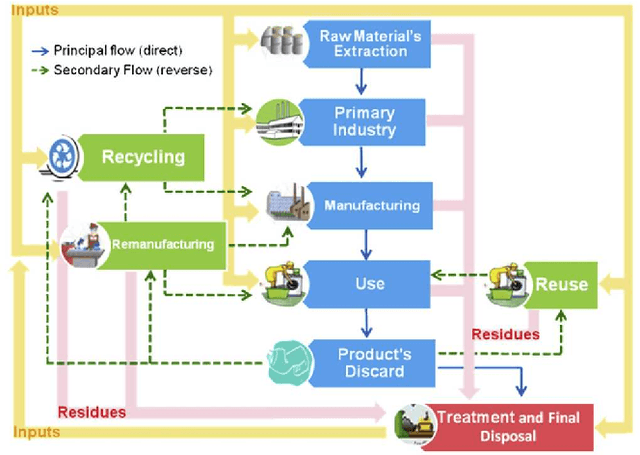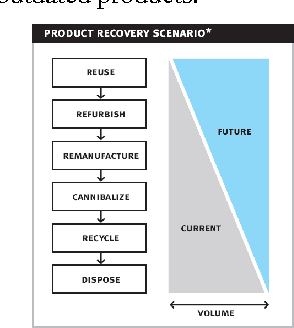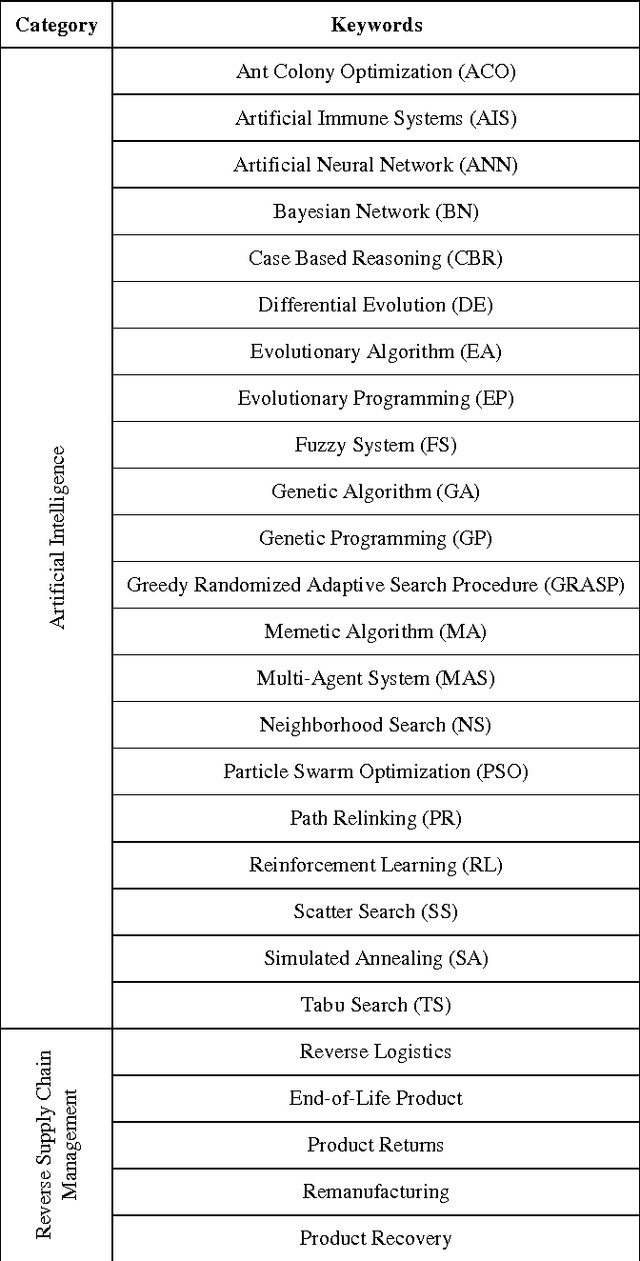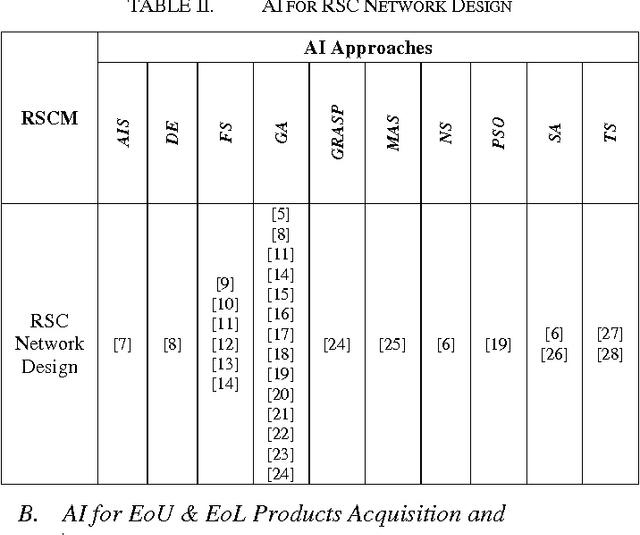Fulufhelo V. Nelwamondo
Artificial Intelligence in Reverse Supply Chain Management: The State of the Art
Dec 18, 2010



Abstract:Product take-back legislation forces manufacturers to bear the costs of collection and disposal of products that have reached the end of their useful lives. In order to reduce these costs, manufacturers can consider reuse, remanufacturing and/or recycling of components as an alternative to disposal. The implementation of such alternatives usually requires an appropriate reverse supply chain management. With the concepts of reverse supply chain are gaining popularity in practice, the use of artificial intelligence approaches in these areas is also becoming popular. As a result, the purpose of this paper is to give an overview of the recent publications concerning the application of artificial intelligence techniques to reverse supply chain with emphasis on certain types of product returns.
The Effect of Structural Diversity of an Ensemble of Classifiers on Classification Accuracy
Apr 30, 2008



Abstract:This paper aims to showcase the measure of structural diversity of an ensemble of 9 classifiers and then map a relationship between this structural diversity and accuracy. The structural diversity was induced by having different architectures or structures of the classifiers The Genetical Algorithms (GA) were used to derive the relationship between diversity and the classification accuracy by evolving the classifiers and then picking 9 classifiers out on an ensemble of 60 classifiers. It was found that as the ensemble became diverse the accuracy improved. However at a certain diversity measure the accuracy began to drop. The Kohavi-Wolpert variance method is used to measure the diversity of the ensemble. A method of voting is used to aggregate the results from each classifier. The lowest error was observed at a diversity measure of 0.16 with a mean square error of 0.274, when taking 0.2024 as maximum diversity measured. The parameters that were varied were: the number of hidden nodes, learning rate and the activation function.
HMM Speaker Identification Using Linear and Non-linear Merging Techniques
May 11, 2007



Abstract:Speaker identification is a powerful, non-invasive and in-expensive biometric technique. The recognition accuracy, however, deteriorates when noise levels affect a specific band of frequency. In this paper, we present a sub-band based speaker identification that intends to improve the live testing performance. Each frequency sub-band is processed and classified independently. We also compare the linear and non-linear merging techniques for the sub-bands recognizer. Support vector machines and Gaussian Mixture models are the non-linear merging techniques that are investigated. Results showed that the sub-band based method used with linear merging techniques enormously improved the performance of the speaker identification over the performance of wide-band recognizers when tested live. A live testing improvement of 9.78% was achieved
Artificial Neural Networks and Support Vector Machines for Water Demand Time Series Forecasting
May 07, 2007



Abstract:Water plays a pivotal role in many physical processes, and most importantly in sustaining human life, animal life and plant life. Water supply entities therefore have the responsibility to supply clean and safe water at the rate required by the consumer. It is therefore necessary to implement mechanisms and systems that can be employed to predict both short-term and long-term water demands. The increasingly growing field of computational intelligence techniques has been proposed as an efficient tool in the modelling of dynamic phenomena. The primary objective of this paper is to compare the efficiency of two computational intelligence techniques in water demand forecasting. The techniques under comparison are the Artificial Neural Networks (ANNs) and the Support Vector Machines (SVMs). In this study it was observed that the ANNs perform better than the SVMs. This performance is measured against the generalisation ability of the two.
 Add to Chrome
Add to Chrome Add to Firefox
Add to Firefox Add to Edge
Add to Edge